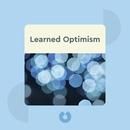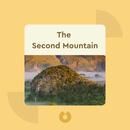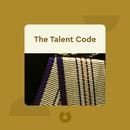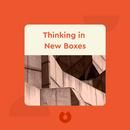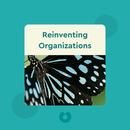The Miracle Equation : The Two Decisions that Move Your Biggest Goals from Possible, to Probable, to Inevitable
Your highlights:The author first discovered the miracle equation in his early twenties.
After listening to Elrod’s presentation, she commented on what a lucky coincidence it was that he’d turned up at just that moment. She and her husband had agreed to buy a new set of knives after their US trip, and they were also looking for a present for her brother, a keen amateur cook. She bought two of Cutco’s "Ultimate Sets" on the spot. That was enough to push Elrod over his $20,000 target!
1 August, 2019 09:54 Share
Establishing unwavering faith is a conscious choice that both mentors and spirituality can support.
Well, it’s what people sometimes call a "leap of faith." That has two aspects. First, it’s a leap because there’s no other way of getting there – neither reason nor evidence provides a clear route to your destination. Secondly, it doesn’t come naturally. As we’ve seen, there are all kinds of obstacles to self-belief. That means it has to be consciously established in a moment of decision.
1 August, 2019 09:55 Share
What keeps miracle mavens going when they’re faced with rejection and setbacks is unwavering faith: the unshakeable belief that they possess the ability to make miracles. But where does that faith come from?
1 August, 2019 09:56 Share
Then there are mentors. Before discovering the miracle equation, the author struggled with confidence issues. His Cutco mentor Jesse Levine, however, had an unshakable belief in his protégé’s abilities. At first, Elrod thought Jesse had simply made a mistake. But over time, that unwavering faith began to rub off on Elrod. Maybe, he started thinking, Jesse was right after all. Eventually, he became convinced that he really was capable of doing anything he put his mind to!
1 August, 2019 09:57 Share
Learning to define yourself can help you overcome biological and social limitations.
That’s partly down to the way the adult human brain functions. When you get down to it, it’s a pretty ancient piece of our wiring. Like our prehistoric ancestors, we’re constantly scanning our environment for signs of danger. That’s rational enough if you’re a caveman – after all, if you’re not on your toes you might just end up being mauled by a mountain lion. Unfortunately, our brains aren’t very good at telling the difference between the anxiety triggered by a charging mammoth and, say, the prospect of moving to a new city for a job. That means we end up irra
1 August, 2019 09:58 Share
That’s partly down to the way the adult human brain functions. When you get down to it, it’s a pretty ancient piece of our wiring. Like our prehistoric ancestors, we’re constantly scanning our environment for signs of danger. That’s rational enough if you’re a caveman – after all, if you’re not on your toes you might just end up being mauled by a mountain lion. Unfortunately, our brains aren’t very good at telling the difference between the anxiety triggered by a charging mammoth and, say, the prospect of moving to a new city for a job. That means we end up irrationally rejecting opportunities.
1 August, 2019 09:58 Share
So how can we break out of these self-limiting patterns? Well, we need to start defining ourselves. That’s not so much about rejecting social labels as it is about refusing to see them as brakes on our capabilities. The author, for example, has been diagnosed with ADHD, but he refuses to let this diagnosis limit him. After all, ADHD makes focusing on tasks harder, but not impossible. And far from being a limit, it even has its upsides – after all, bouncing from one idea to the next can also be a highly effective creative strategy!
1 August, 2019 09:59 Share
The five-minute rule can help you achieve emotional peace when things go wrong.
That’s something he learned from his Cutco mentor Jesse Levine. By the time of the crash, Elrod had been applying it every day for nearly two years. Here’s how it works: it’s okay to feel bad when things go wrong, but not for more than five minutes. When you suffer a setback, you set a timer and do whatever you need to – scream, cry, kvetch or punch a wall. Then, when the time’s up, you say, "Can’t change it" aloud and move on.
1 August, 2019 09:59 Share
Wallowing
1 August, 2019 10:00 Share
emotional pain isn’t caused by external events that are beyond our control, but by our responses. Wallowing, in other words, is a choice that keeps us trapped in experiences we’re powerless to alter. Letting go and accepting them, by contrast, lets us move on. In Elrod’s case, it meant he could fully focus on his recovery and, eventually, regain the use of his legs.
1 August, 2019 10:00 Share
Extraordinary effort is all about consistency and commitment.
Consistency pays. Rather than using newfangled sales hacks, they were hitting their phones every day at the same time and making the same number of calls.
1 August, 2019 10:04 Share
Final summary
And that’s where the miracle equation comes in: unwavering faith plus extraordinary effort equals miracles. In everyday terms, that means learning to overcome inborn cognitive limits, embracing your true gifts and putting in the hours necessary to realize your desires and ambitions.
1 August, 2019 10:06 Share
About the book:
The Miracle Equation (2019) is a hands-on guide to living your best life and making your dreams come true. Drawing on the wisdom of miracle-makers old and new, best-selling author and motivational speaker Hal Elrod shows how highfliers achieve their success by adhering to two basic principles: unwavering commitment and extraordinary effort. Packed with actionable advice on everything from dealing with emotional pain to prioritizing goals, these blinks will help you put the past behind you and move toward a glittering future.
About the author:
Hal Elrod is a life coach, motivational speaker and author. After almost dying in a car crash and defying the odds to beat a rare form of cancer with a 20 to 30 percent survival rate, he knows a thing or two about miracles. Today, he uses his insights to help millions of people around the world overcome their own challenges and reach their full potential. His previous books include The Miracle Morning (2012).
Blinkist takes outstanding nonfiction books and distills their key insights into made-for-mobile book summaries that you can read in just 15 minutes. Learn something new every day - on your smartphone, tablet or PC.
blinkist.com


